Shannon V. OKeets
Posts: 22095
Joined: 5/19/2005
From: Honolulu, Hawaii
Status: offline

|
quote:
ORIGINAL: paulderynck
quote:
ORIGINAL: Shannon V. OKeets
quote:
ORIGINAL: paulderynck
About doubling due to an OC - By RAW this happens "when final odds are calculated". And since you have to be able to apply more OGS than equal to the attacking base value - in case some gets shot down or aborted - then you can have more OGS in the attack then the normal limit and then double units appropriately and perhaps save a doubling for some other unit or for an overrun resulting from a Breakthrough. (Steve - is using OC doubling for overruns - both movement and breakthrough overruns - handled by the program?)
I have no idea about programming complexity for all this and perhaps some must need be changed in RAC to preserve the programmers (remaining  ) sanity. ) sanity.
I have trouble with the phrase "when final odds are calculated". Yeah, I know, it should be obvious. But then there is the die roll for fractional odds which may change the odds. It doesn't interfere with the OC doubling, but adds some confusion to the mix. And the roll for the fractional odds has been generally agreed to occur when the other die rolls on the CRT are made. If OC doubling can be applied after the fractional odds roll, another round of changes to the code I just changed would be needed.
As was pointed out, the extra die for fractionals is often rolled by players in the the same handfull as the combat dice. Final odds are the odds prior to rolling any dice for the combat and the doubling or not happens just prior to that in WiF. If MWiF is going to be different then it should be for a good reason. Mind you, we used to play it that way until we discovered the quote I mentioned and it won't make a huge difference. Personally I prefer it the way RAW reads, now that I've tried it both ways. Your arguments against fall in the eternal "gamer versus historical simulator" category and if gamer is left wing and simulator is right wing, then I'm a raving, foaming at the mouth, died in the wool, arch-commie.
quote:
Using excess shore bombardment and ground support with the expectation that you 'might' use the OC doubling later, strikes me as very strange.
Oh really? Does putting in extra OGS in anticipation of losing something in the air battle strike you as strange? "Let's see, I can only double myself. Gosh I sure hope nothing gets aborted and I'll say a little prayer that my opponent won't fire his AA." Likewise if I overkill on OSB and then choose not to double a unit or two after all, then who suffers? Of course I should realize that historically the Allies never, ever applied excess doses of shore bombardment, they always used just enough to double their ground factors after all. Silly me!
quote:
As a player, I find the small gains achievable by subtle choices as to when these decisions are made to be counter-intuitive; and as a designer, not something that adds to the realism of the simulation.
As a gamer, I'm compelled to make the best use of the forces at my disposal, adapt to changing situations and take advantage of every trick in the book to optimize my move in a superior fashion to that of my opponent. (I'm a little competitive when I game.) Oddly this prescription often means I can roll the dice less well than my opponent, but can still win.
quote:
I see nothing particularly wrong with the land combat sequence of play I have laid out above. Yes, the player has to decide about OC doubling 'early', before: the use of snow units by the defender, the choice of CRT, and the roll for fractional odds. From a designer's point of view, the OC doubling represents the commitment of large accumulations of materiel in an offensive land attack. There are many examples of this occurring during WWII, with perhaps one of the better known ones being the German build up and commitment of forces for the "Battle of the Bulge". Winterized units played a role there too. These commitments of extra units et al were not done on the spur of the moment, so the placement I currently have for when this decision is made seems approriate to me.
I'd say the Destruction of Army Group Center involved the use of a Soviet OC or two, but applied more on an opportunistic scale then on a totally pre-planned one.
Yes, knowing the quirks in the rules can be an advantage when playing the game, especially against someone who doesn't know them. [Personally, I prefer rules without quirks.]
In my role as the developer here, I want the game to be well received by new players. Obviously, the fewer quirks the better from the new player's point of view.
_____________________________
Steve
Perfection is an elusive goal.
|
 Printable Version
Printable Version
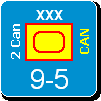





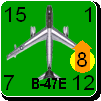
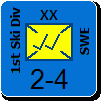
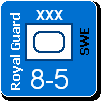
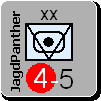
 ) sanity.
) sanity.
 New Messages
New Messages No New Messages
No New Messages Hot Topic w/ New Messages
Hot Topic w/ New Messages Hot Topic w/o New Messages
Hot Topic w/o New Messages Locked w/ New Messages
Locked w/ New Messages Locked w/o New Messages
Locked w/o New Messages Post New Thread
Post New Thread